
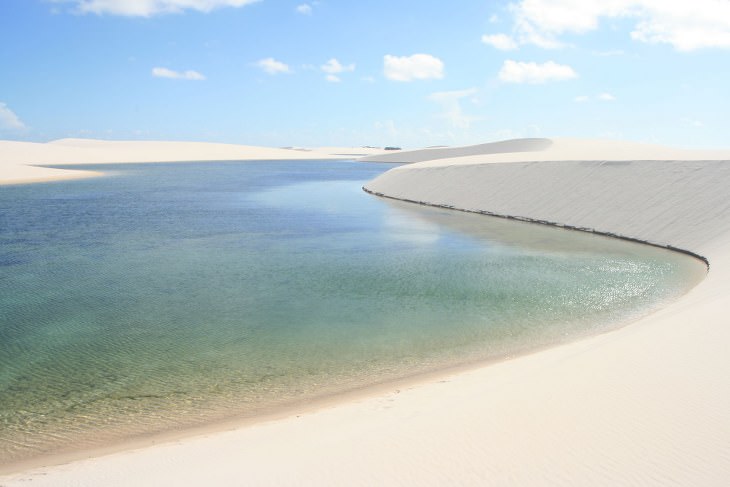
Established as a national park on June 2, 1981, Lençóis Maranhenses National Park lies a good 260km away from the city of São Luís in Brazil. The entire area consists of around 1550km² of unspoiled natural beauty. Lying just outside of the Amazon Basin, the park is subject to a regular rainy period at the start of each year, yet despite this abundant amount of rainfall, it supports practically no vegetation whatsoever.
The park itself is characterized by huge, white, sweeping sand dunes, with pools of fresh water scattered all across it. The resulting lagoons are prevented from draining thanks to a dense layer of impermeable rock which lies just underneath the sand. Curiously, according to folk legends, the region was originally inhabited by Caeté Indians, who woke one day to find their ancestral land completely covered by sand!
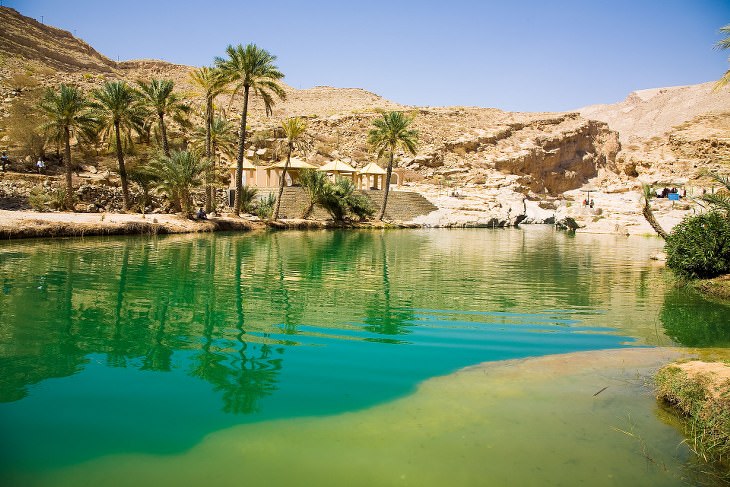
Located 203km away from Muscat in Oman, Wadi Bani Khalid is the most popular valley in the Sharqiyah region, and is full of many stunning oases and other pretty bodies of water. A spectacular feature of these oases is the fact that they're surrounded by evergreen plants, thanks to nearby valleys providing them with fresh water around the clock.
The wadi is also surrounded by quite a number of interesting caves, which include one of the Sultanate's underground chambers, known as Kahf Maqal. What's more, when approaching the wadi, visitors will be able to marvel at some incredibly colorful rock formations, which are rust-red with iron ore and green with copper oxide.
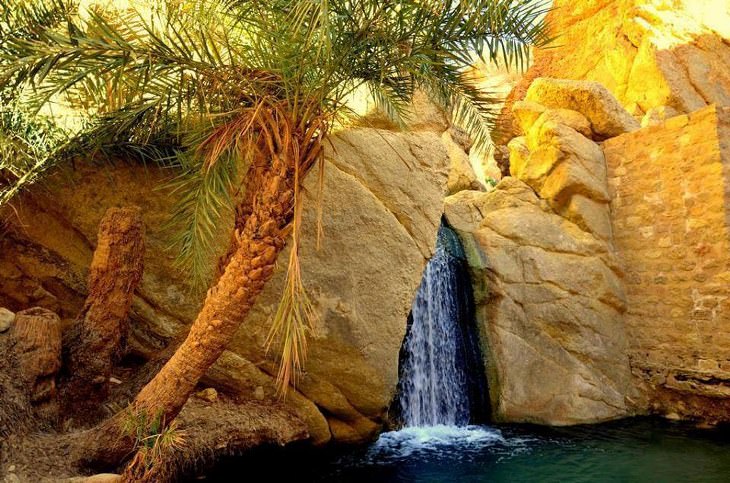
Chebika is a quaint mountain oasis found within the Tozeur Governorate of western Tunisia. It lies at the foot of the Djebel el Negueb mountains, and because of its continuous exposure to the sun, it has become known as the Castle of the Sun. Chebika is a very historically significant place, since not only was it once a Roman outpost from 30BC to 640AD, called 'Ad Speculum,' but it also later became a mountain haven for the Berber people.
This oasis is also very popular with movie buffs from around the world, since both 'The English Patient' and 'Star Wars Episode IV: A New Hope' had plenty of scenes shot here.
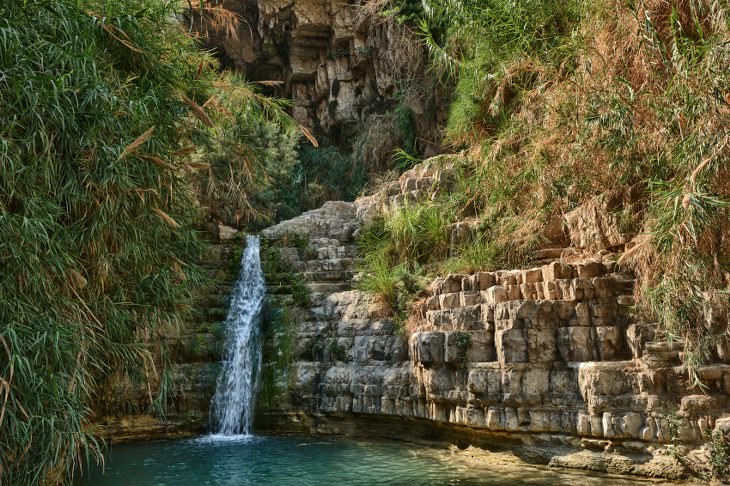
Located on the Judean Desert's eastern border, on the coast of the Dead Sea, Ein Gedi is one of the many jewels of Israel, and is considered to be one of the most spectacular oases you could ever visit. Spread over 14km², Ein Gedi is home to plenty of incredible wild animals, such as wild goats and even desert leopards.
From an archeological point of view, the history of Ein Gedi dates back to the Neolithic period, and archeologists have found pottery, an arrowhead, and flint tools deep within Mikveh Cave. Ein Gedi is also a place of great religious importance, as it is said to be the place where David hid from King Saul "upon the most craggy rocks, which are accessible only to wild goats." (1 Samuel 24:2)

Just 6km south of Dunhuang in China's Gansu Province lies a unique crescent-shaped lake, with a surface area of 5.5km², found within an oasis that was originally named Yueyaquan during the Qing Dynasty, but is more commonly known as Crescent Lake due to its peculiar shape. Both the lake and the deserts that surround it are very popular with tourists in the region, and both camel and 4x4 rides regularly operate in the area.
In 1960, the maximum depth of the lake was recorded at 7.5m. Unfortunately, by the 1990s, this had shrunk to a mere 1.3m, with an average depth of only 0.9m. Due to fears of this remarkable landmark becoming lost beneath the sand forever, the central government decided to step in to give a helping hand, and since then the lake's depth and size have both been growing year by year.
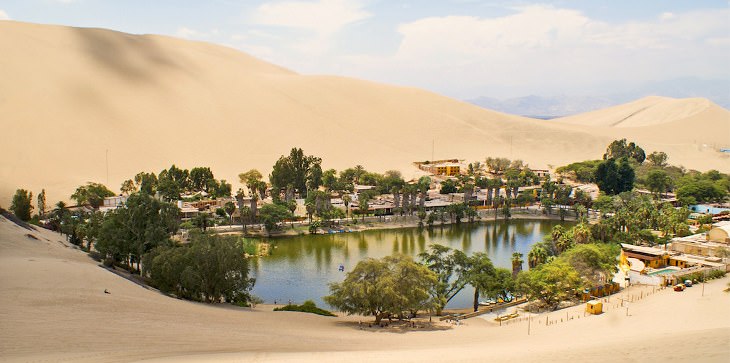
Huacachina is a small village in the southwestern region of Peru that's surrounded by majestic sand dunes and is built around a small but spectacular oasis. Situated five hours south of Lima, this remarkable village has a local population of just around 100 people, but it is a very popular tourist destination for tens of thousands of tourists a year.
In the 1980s, water finally stopped seeping into the oasis, which threatened the existence of the lagoon. However, in 2015, water started to be pumped into the lagoon from a nearby farm, which has already raised the water level by more than 3 meters in all. This is great news for any lovers of exotic myths, since according to folk legends, a beautiful mermaid is said to reside there.
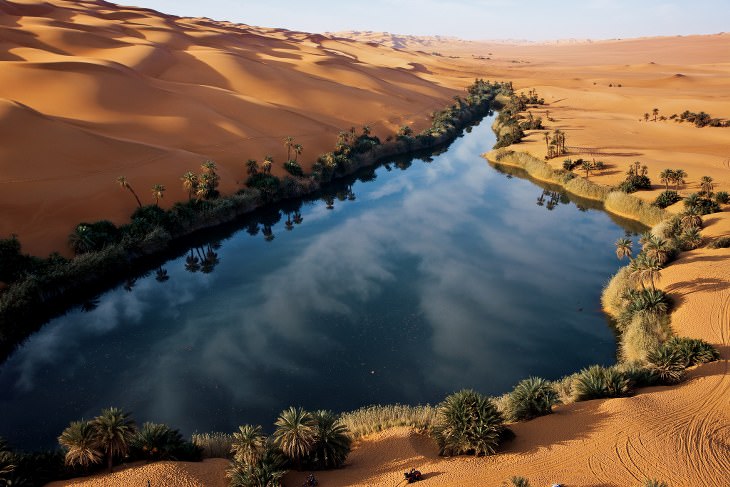
Ubari Oasis is a stunning oasis town located in the Fezzan region of the Sahara Desert in southwestern Libya. It has a population of approximately 35,000 people, and is found at an elevation of 468m. This magnificent oasis is found in one of the driest and hottest regions on the planet, with average high temperatures often in excess of 40°C (104°F) from June to September.
The oasis experiences very little amounts of annual rainfall, and sometimes it even ceases to rain for a decade or so! Due to this issue, the water tends to become very stagnant, and so it isn't at all suitable for drinking or even bathing in. Nevertheless, its unique location and surrounding vegetation make it a completely picturesque oasis, reminiscent of the many oases found within the Arabian Nights.
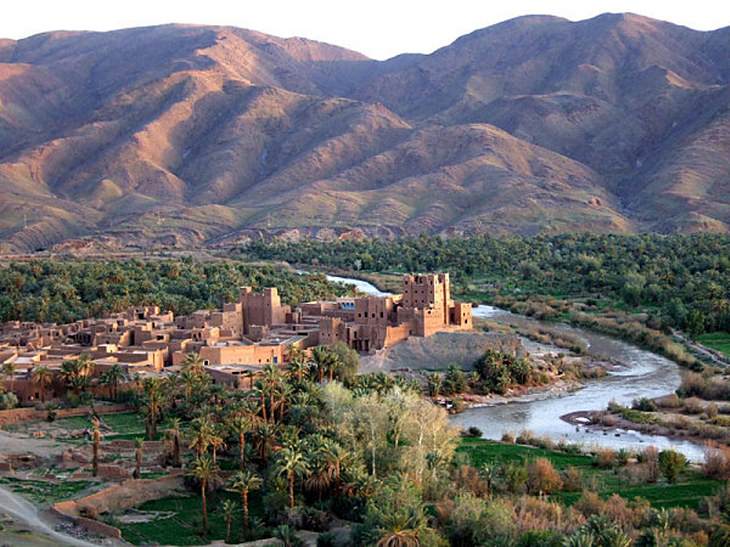
Tafilalt is the largest oasis to be found in the whole of Morocco, and is located in the Drâa-Tafilalet region in the eastern part of the country. The name 'Tafilalt' literally means 'Jug' in Amazigh due to the impressive amount of fresh water that it contains. This oasis is entirely located along the Ziz River, and is renowned for its juicy and delicious dates.
The town that is situated within the oasis was founded in 757AD by Moussa ben Nasser, the then-leader of the Miknasa Amazigh, and was also the birthplace of Morocco's Alaouite dynasty in the 17th Century. The most famous person to ever have been born here was Rabbi Israel Abuhatzeira, more commonly known as Baba Sali.
Images: 1, 2, 3, 4, 5, 6, 7, 8